What is the most efficient way to find the bounding box of the largest blob in a binary image using OpenCV? Unfortunately, OpenCV does not have specific functionality for blob detection. Should I just use findContours() and search for the largest in the list?
- 26,823
- 32
- 143
- 200
-
2It depends what you want to do with the blob afterwards, but your approach is valid :) – Quentin Geissmann May 25 '13 at 07:42
-
If you say what language you're using, you may get more specific answers. – Geoff May 25 '13 at 12:51
-
I just read a bit about this. If you already have a binary image, it sounds like using Suzuki's method (`findContours`) is a really good fit. You could also incrementally find the first white pixel, then use `floodFill` to find the rest of that region, and so on. But I'm not sure that would be any faster. – Geoff May 25 '13 at 12:59
-
2I just want to find the bounding box of the blob. I'm using OpenCV for Android, but all versions of OpenCV have pretty much the same functionality. – 1'' May 25 '13 at 14:32
5 Answers
Here. It. Is. (FYI: try not to be lazy and figure out what happens in my function below.
cv::Mat findBiggestBlob(cv::Mat & matImage){
int largest_area=0;
int largest_contour_index=0;
vector< vector<Point> > contours; // Vector for storing contour
vector<Vec4i> hierarchy;
findContours( matImage, contours, hierarchy,CV_RETR_CCOMP, CV_CHAIN_APPROX_SIMPLE ); // Find the contours in the image
for( int i = 0; i< contours.size(); i++ ) {// iterate through each contour.
double a=contourArea( contours[i],false); // Find the area of contour
if(a>largest_area){
largest_area=a;
largest_contour_index=i; //Store the index of largest contour
//bounding_rect=boundingRect(contours[i]); // Find the bounding rectangle for biggest contour
}
}
drawContours( matImage, contours, largest_contour_index, Scalar(255), CV_FILLED, 8, hierarchy ); // Draw the largest contour using previously stored index.
return matImage;
}
- 2,689
- 2
- 26
- 36
-
-
Nope, my answer is in C++, the core language for OpenCV. As i said, it's for the lazy ones. – TimZaman Feb 25 '14 at 13:39
-
@TimZaman Could you help me with the java equivalent of drawContours() – Prasanna Aarthi Sep 16 '14 at 11:53
If you want to use OpenCV libs, check out OpenCVs SimpleBlobDetector. Here's another stack overflow showing a small tutorial of it: How to use OpenCV SimpleBlobDetector
This only gives you key points though. You could use this as an initial search to find the blob you want, and then possibly use the findContours algorithm around the most likely blobs.
Also the more information you know about your blob, you can provide parameters to filter out the blobs you don't want. You might want to test out the area parameters of the SimpleBlobDetector. Possibly could could compute the area based on the size of the area of the image and then iteratively allow for a smaller blob if the algorithm does not detect any blobs.
Here is the link to the main OpenCV documentation: http://docs.opencv.org/modules/features2d/doc/common_interfaces_of_feature_detectors.html#simpleblobdetector
-
Thanks for the link, this looks like a good alternative to `findContours`. Unfortunately it's not in OpenCV4Android, so I'll stick to my original plan. – 1'' May 25 '13 at 21:36
To find the bounding box of the largest blob, I used findContours, followed by the following code:
double maxArea = 0;
for (MatOfPoint contour : contours) {
double area = Imgproc.contourArea(contour);
if (area > maxArea) {
maxArea = area;
largestContour = contour;
}
}
Rect boundingRect = Imgproc.boundingRect(largestContour);
- 26,823
- 32
- 143
- 200
-
1What if there is a hole inside that contour and we want the blob with the largest area? – Koray Mar 03 '17 at 13:17
Since no one has posted a complete OpenCV solution, here's a simple approach using thresholding + contour area filtering
Input image
Largest blob/contour highlighted in green
import cv2
# Load image, grayscale, Gaussian blur, and Otsu's threshold
image = cv2.imread('1.png')
gray = cv2.cvtColor(image, cv2.COLOR_BGR2GRAY)
thresh = cv2.threshold(gray, 0, 255, cv2.THRESH_BINARY_INV + cv2.THRESH_OTSU)[1]
# Find contours and sort using contour area
cnts = cv2.findContours(thresh, cv2.RETR_EXTERNAL, cv2.CHAIN_APPROX_SIMPLE)
cnts = cnts[0] if len(cnts) == 2 else cnts[1]
cnts = sorted(cnts, key=cv2.contourArea, reverse=True)
for c in cnts:
# Highlight largest contour
cv2.drawContours(image, [c], -1, (36,255,12), 3)
break
cv2.imshow('thresh', thresh)
cv2.imshow('image', image)
cv2.waitKey()
- 42,661
- 14
- 115
- 137
TimZaman, your code has a bug but I can't comment so I start a new and correct answer. Here is my solution based on 1"'s and TimZaman's ideas:
Mat measure::findBiggestBlob(cv::Mat &src){
int largest_area=0;
int largest_contour_index=0;
Mat temp(src.rows,src.cols,CV_8UC1);
Mat dst(src.rows,src.cols,CV_8UC1,Scalar::all(0));
src.copyTo(temp);
vector<vector<Point>> contours; // storing contour
vector<Vec4i> hierarchy;
findContours( temp, contours, hierarchy,CV_RETR_CCOMP, CV_CHAIN_APPROX_SIMPLE );
for( int i = 0; i< contours.size(); i++ ) // iterate
{
double a=contourArea( contours[i],false); //Find the largest area of contour
if(a>largest_area)
{
largest_area=a;
largest_contour_index=i;
}
}
drawContours( dst, contours,largest_contour_index, Scalar(255), CV_FILLED, 8, hierarchy );
// Draw the largest contour
return dst;
}
- 26
- 5

